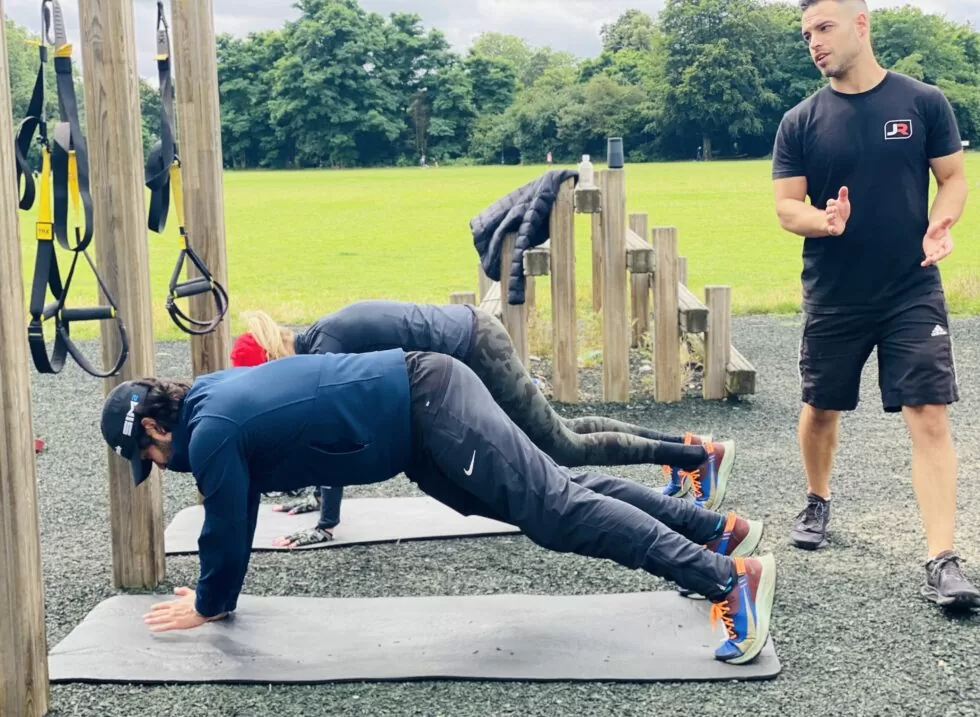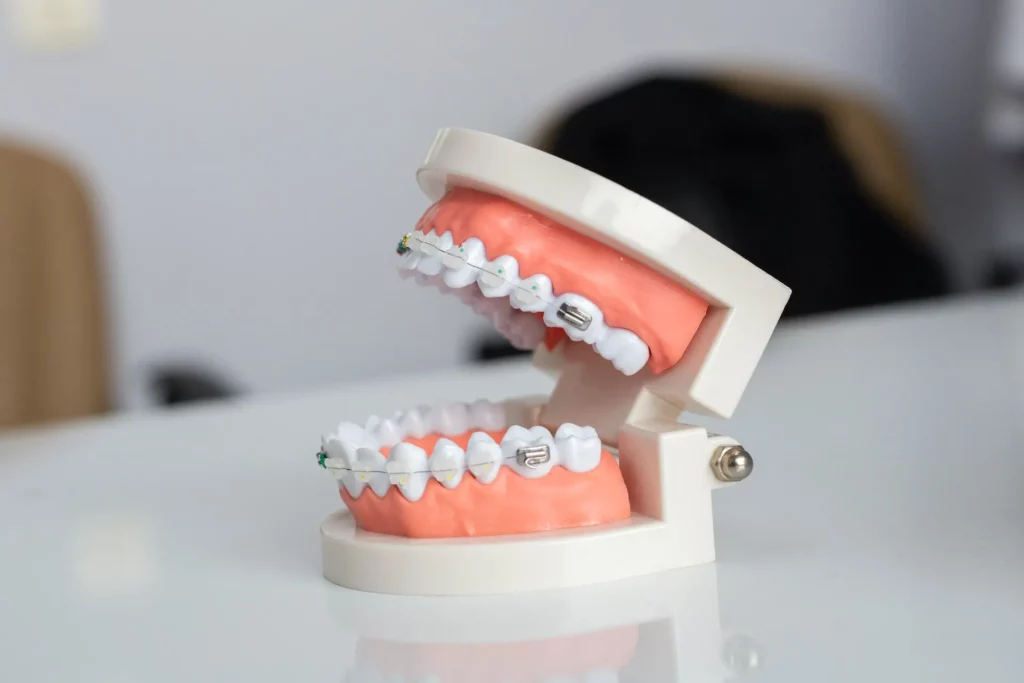Health
Hip Pain Relief Without Surgery – Non-Invasive Regeneration Procedures

Hip pain can be a debilitating condition limiting your ability to perform everyday activities. Various factors, including arthritis, bursitis, and tendonitis, can cause hip pain. While surgery is an option for severe cases, there are non-invasive regeneration procedures that can relieve hip pain without surgery.
Non-invasive regeneration procedures are becoming increasingly popular among patients seeking hip pain relief. These procedures involve using the body’s natural healing mechanisms to repair damaged tissue and reduce pain. They are typically minimally invasive and require little to no downtime.
Platelet-rich plasma or PRP Therapy
According to the specialists at QC Kinetix (Lake Norman) near Davidson, one of the most popular non-invasive regeneration procedures for hip pain relief is platelet-rich plasma (PRP) therapy. PRP therapy involves extracting a small amount of the patient’s blood and processing it to concentrate the platelets. Platelets contain growth factors that can stimulate the body’s natural healing response. The concentrated platelets are then injected into the hip joint, where they can promote the regeneration of damaged tissue.
PRP therapy is effective for various hip conditions, including osteoarthritis, labral tears, and hip impingement. A study published in the American Journal of Sports Medicine found that patients with hip osteoarthritis who received PRP therapy had significantly less pain and better function than those who received a placebo injection.
Stem cell therapy
Another non-invasive regeneration procedure for hip pain relief is stem cell therapy. Stem cells are unique cells that can differentiate into different types of cells in the body. Stem cell therapy involves extracting stem cells from the patient’s bone marrow or adipose tissue (fat) and injecting them into the hip joint. The stem cells can then differentiate into the type of cells needed to repair damaged tissue.
Stem cell therapy is effective for various hip conditions, including osteoarthritis, labral tears, and avascular necrosis. A study published in the Journal of Bone and Joint Surgery found that patients with osteoarthritis who received stem cell therapy significantly improved pain, function, and quality of life compared to those who received a placebo injection.
Prolotherapy
Finally, prolotherapy is another non-invasive regeneration procedure that can relieve hip pain. Prolotherapy involves injecting a solution of dextrose (sugar) and lidocaine (a local anesthetic) into the hip joint. The solution irritates the tissues, stimulating the body’s natural healing response.
Prolotherapy is effective for various hip conditions, including hip osteoarthritis and sacroiliac joint dysfunction. A study published in the Journal of Alternative and Complementary Medicine found that patients with hip osteoarthritis who received prolotherapy significantly improved pain, function, and quality of life compared to those who received a placebo injection.
In addition to non-invasive regeneration procedures, there are other steps patients can take to manage hip pain. These include weight loss, physical therapy, and medication management. Combining these approaches may be the most effective way to manage hip pain and improve overall function. Get in touch with your doctor when you notice anything out of place. Do not ignore the pain. Delaying the visit to the doctor can prove to be costly in the long run.
Health
Building Blocks: Essential Steps for Launching Your Dental Clinic

Are you ready to turn your dream of owning a dental clinic into a reality? Starting your dental practice can be an exciting and rewarding journey, but it also requires careful planning and execution. In this comprehensive guide, we’ll walk you through the essential steps you need to take to build a successful dental clinic from the ground up.
Define Your Vision and Mission:
Before diving into the logistics of starting a dental clinic, take some time to define your vision and mission. What sets your practice apart from others? What values do you want to uphold? Your vision and mission will serve as the foundation for your clinic and guide your decisions moving forward.
Conduct Market Research:
Understanding the market is crucial for the success of your dental clinic. Research the demographics of the area where you plan to open your practice, analyze the competition, and identify any gaps or opportunities in the market. This information will help you tailor your services to meet the needs of your target audience.
Develop a Business Plan:
A well-thought-out business plan is essential for securing funding and guiding your business decisions. Outline your clinic’s goals, target market, services offered, marketing strategies, and financial projections. Your business plan will serve as a roadmap for your clinic’s growth and success.
Secure Financing:
Launching a dental clinic requires a significant investment in equipment, supplies, staffing, and marketing. Explore your financing options, such as bank loans, investors, or grants, and determine the best approach for funding your clinic. Ensure that you have a solid financial plan in place to cover both startup costs and ongoing expenses.
Choose a Strategic Location:
The location of your dental clinic can greatly impact its success. Look for a location with high visibility, easy accessibility, and a target market that aligns with your services. Consider factors such as parking availability, foot traffic, and competition in the area when selecting your clinic’s location.
Obtain Necessary Licenses and Permits:
Before opening your dental clinic, you’ll need to obtain the necessary licenses and permits to operate legally. This may include a dental license, business license, health permits, and zoning permits. Familiarize yourself with the regulatory requirements in your area and ensure that you comply with all applicable laws and regulations.
Build Your Team:
Surround yourself with a skilled and dedicated team to help you bring your vision to life. Hire qualified dental professionals, such as dentists, hygienists, and dental assistants, who share your commitment to providing exceptional patient care. Invest in training and development programs to help your team excel in their roles.
Invest in Quality Equipment and Technology:
The success of your dental clinic relies heavily on the quality of care you provide to your patients. Invest in state-of-the-art dental equipment and technology to ensure that you can deliver the highest standard of care. Stay updated on the latest advancements in dental technology and be willing to adapt and integrate new tools and techniques into your practice.
Develop a Marketing Strategy:
Marketing plays a crucial role in attracting new patients and expanding your dental clinic. It’s imperative to craft a robust dental practice marketing strategy that encompasses both online and offline approaches. This strategy should incorporate various tactics, including optimizing your website, engaging in social media marketing, leveraging local advertising channels, and engaging in community outreach efforts. It’s essential to showcase the unique qualities of your clinic and underscore the advantages of selecting your practice for their dental care requirements.
Focus on Patient Experience:
Providing an exceptional patient experience is key to building a loyal patient base and growing your dental clinic. Focus on creating a welcoming and comfortable environment for your patients, from the moment they step through the door to the completion of their treatment. Listen to their concerns, communicate clearly, and go above and beyond to exceed their expectations.
In Conclusion
Launching a dental clinic requires careful planning, dedication, and hard work, but with the right strategy and mindset, you can turn your vision into a thriving reality. By following these essential steps and staying committed to providing excellent patient care, you’ll be well on your way to building a successful dental practice that makes a lasting impact in your community.
Health
Enhance Your Fitness Journey with Jorge Rojo’s Bootcamp Trainings in Clapham Common, London

Searching for a dedicated personal trainer in Clapham Common, London, to elevate your fitness game? Look no further than Jorge Rojo, an experienced fitness coach with over a decade of expertise in the heart of London. Jorge specializes in conducting invigorating bootcamp sessions amidst the scenic beauty of Clapham Common Park, offering tailored workouts to help you achieve your fitness goals effectively.
The Expertise of Jorge Rojo: A Proven Track Record
Jorge Rojo stands out among personal trainers in Clapham Common due to his proven track record and extensive experience in the fitness industry. With more than a decade dedicated to refining his skills and methodologies, Jorge has cultivated a deep understanding of various fitness principles and training techniques. His proficiency extends beyond conventional workout routines, encompassing expertise in nutrition, injury prevention, and holistic wellness.
Having worked with diverse clientele, Jorge possesses the versatility to adapt his training methods to suit individual needs effectively. His background in sports science and continuous pursuit of updated fitness knowledge allows him to stay at the forefront of the industry, ensuring that his clients receive the most effective and contemporary fitness guidance available in Clapham Common.
Bootcamp Training Amidst Clapham Common’s Serenity
Imagine embarking on a fitness journey surrounded by the tranquil beauty of Clapham Common Park. Jorge Rojo’s bootcamp sessions offer a refreshing departure from the enclosed gym environment. Through innovative exercises utilizing park features, such as benches, open spaces, and natural terrains, Jorge creates dynamic and engaging workouts that challenge participants while fostering a deep connection with nature.
Participants in Jorge’s bootcamp sessions not only benefit from a physically demanding workout but also enjoy the mental and emotional rejuvenation that comes from exercising in a natural setting. The ambiance of Clapham Common serves as an inspirational backdrop, fostering motivation and a sense of community among participants striving towards their fitness goals.
Tailored Fitness Plans for Lasting Results
Jorge Rojo’s approach to fitness goes beyond generic, one-size-fits-all routines. He emphasizes the importance of understanding each client’s unique needs, preferences, and fitness objectives. By conducting comprehensive assessments and consultations, Jorge crafts bespoke fitness plans that consider individual fitness levels, health conditions, and lifestyle factors.
These personalized plans encompass a holistic approach, including customized workout routines, dietary recommendations, and lifestyle adjustments tailored to each client’s goals. By addressing the specific needs of his clients, Jorge ensures that they not only achieve short-term fitness milestones but also adopt sustainable habits that promote long-term health and well-being.
Community Engagement and Support: Jorge Rojo’s Fitness Philosophy
Beyond his exceptional skills as a personal trainer, Jorge Rojo is renowned for fostering a strong sense of community among his clients. He believes in the power of a supportive network and encourages camaraderie among participants in his bootcamp sessions at Clapham Common. Jorge creates an inclusive and welcoming environment where individuals feel motivated, supported, and empowered on their fitness journeys.
Through group activities, team challenges, and interactive sessions, Jorge cultivates a sense of belonging among participants. This communal approach not only enhances the overall workout experience but also creates a positive atmosphere that inspires individuals to push their limits and achieve collective fitness goals.
Jorge Rojo’s dedication to community engagement extends beyond the workout sessions. He frequently organizes social events, workshops, and educational seminars focusing on fitness, nutrition, and mental well-being. These events serve as opportunities for clients to connect, share experiences, and gain valuable insights into leading a healthier lifestyle.
By emphasizing community engagement and support, Jorge Rojo distinguishes himself as more than just a personal trainer; he becomes a mentor and a catalyst for positive lifestyle changes among the Clapham Common fitness community. His commitment to building a supportive network amplifies the overall impact of his bootcamp sessions, making them an enriching and transformative experience for all participants.
Testimonials: Clients’ Transformative Journeys with Jorge
Jorge Rojo’s impact on his clients’ lives extends far beyond physical transformations. His dedication, motivational support, and expert guidance have inspired individuals to overcome obstacles, instilling confidence and fostering a positive mindset. Clients often express not just gratitude for achieving fitness milestones but also appreciation for the improved quality of life that accompanies their journey with Jorge.
From stories of weight loss achievements to narratives of enhanced strength and endurance, Jorge’s clients consistently highlight his unwavering commitment to their success. Their testimonials serve as a testament to Jorge Rojo’s exceptional ability to motivate, educate, and guide individuals towards their fitness aspirations, making him a standout personal trainer in Clapham Common.
Choosing a personal trainer in Clapham Common is a crucial step toward achieving your fitness objectives. Jorge Rojo’s bootcamp sessions offer a refreshing alternative to traditional gym workouts, providing a unique opportunity to train amidst nature’s tranquility. With Jorge’s extensive experience and tailored approach, you can embark on a transformative fitness journey that leads to sustainable results. Experience the difference with Jorge Rojo’s bootcamp sessions and witness your fitness aspirations come to life amidst the picturesque Clapham Common Park.
Health
The Best Braces: An Ultimate Guide

Orthodontic treatment with braces has seen remarkable advancements over the years, revolutionizing the way individuals achieve straighter, healthier smiles. From traditional metal braces to innovative clear aligners, the world of orthodontics offers various options to cater to different needs. This article aims to serve as a comprehensive guide, empowering individuals with knowledge about braces and aiding in making informed decisions about orthodontic treatment. Whether considering braces for cosmetic reasons or addressing dental issues, understanding the nuances of this transformative journey is crucial. If you have further questions, please don’t hesitate to reach out to a qualified orthodontist. Let’s delve into a comprehensive guide to understanding braces.
Table of Contents
Introduction to Braces
Braces have been transforming smiles for decades. Initially designed to align teeth, braces have evolved to correct various dental issues, from misalignment to overcrowding. Understanding the different types and functionalities of braces is crucial in making an informed decision about orthodontic treatment.
How Braces Work
Braces operate by applying constant pressure on the teeth, encouraging them to shift gradually. This pressure stimulates the bone remodeling process, allowing teeth to move into their correct positions. The journey begins with a consultation where the orthodontist evaluates the patient’s needs and formulates a treatment plan. Subsequently, the braces are custom-made and fitted, followed by regular adjustments to ensure progress.
Purpose of Braces
Braces serve a crucial purpose in orthodontic treatment by correcting misaligned teeth and bite issues. Their primary aim is to straighten teeth, improve dental health, and enhance overall oral function. By applying gentle, continuous pressure, braces gradually shift teeth into proper alignment, addressing crowded, crooked, or spaced teeth. Additionally, braces can mitigate problems associated with an irregular bite, such as difficulty chewing, speaking, or maintaining proper oral hygiene. Beyond aesthetics, their purpose encompasses fostering healthier teeth, gums, and a more functional bite, thereby contributing to a person’s overall well-being and confidence.
Factors to Consider Before Getting Braces
Before embarking on the journey towards a corrected smile, several factors require consideration. Assessing individual dental needs, budget constraints, and understanding the impact braces might have on lifestyle are essential steps.
Orthodontic Evaluation
Prior to getting braces, an orthodontist conducts a thorough assessment to determine the necessity for treatment and devise an appropriate plan tailored to your dental needs.
Different Types of Braces
There isn’t a one-size-fits-all approach in orthodontics. Traditional metal braces, ceramic braces blending with teeth, lingual braces hidden behind teeth, and the popular clear aligners like Invisalign offer diverse options for individuals seeking orthodontic treatment.
There are various options available, from traditional metal braces to ceramic, lingual, or clear aligners. Understanding the differences and discussing preferences with the orthodontist is crucial.

Effectiveness and Duration of Treatment
Understanding the duration and effectiveness of each type of braces aids in setting realistic expectations. While some treatments might be quicker, others could take longer to achieve desired results.
The duration of the treatment varies depending on individual cases. Some might require a few months, while others might need a couple of years. Being aware of the timeline helps in setting realistic expectations.
Costs and Insurance Coverage
The financial aspect of braces treatment can vary significantly. Exploring insurance coverage and available payment plans helps in managing expenses associated with orthodontic treatment. The cost of orthodontic treatment can vary significantly based on factors like the type of braces chosen, duration of treatment, and additional procedures required. Exploring payment plans or insurance coverage beforehand can ease financial concerns. The cost of braces varies based on several factors, including the type of braces and the complexity of the case. Exploring financing options can make treatment more accessible.
Dental Health Considerations

Choosing the Right Orthodontist
Selecting a reliable orthodontist involves research, consultations, and evaluations. A qualified professional can guide individuals through the treatment journey with expertise and care.
Oral Hygiene
Maintaining impeccable oral hygiene becomes even more critical with braces. Proper brushing, flossing, and using orthodontic-friendly products help prevent issues like plaque buildup or gum disease.
Potential Oral Health Issues
Braces might pose challenges like temporary discomfort, soreness, or even the risk of enamel damage if not cared for properly. Regular check-ups during treatment are vital to address any emerging concerns.
Impact on Diet
Certain foods might need to be avoided or consumed with caution to prevent damage to the braces or teeth. Hard, sticky, or excessively sugary foods are typically discouraged.
Lifestyle Implications
Life with Braces
Braces can impact social interactions, speech, and eating habits. Understanding and adapting to these changes are essential for a smooth orthodontic experience.
Social Impacts
Wearing braces might influence social interactions or self-esteem initially. However, understanding the temporary nature of this phase and the long-term benefits can ease these concerns.
Impact on Activities
Engagement in certain activities or sports might require additional precautions or protective gear to safeguard the braces.The completion of braces treatment marks the beginning of the retention phase, involving the use of retainers to maintain the achieved alignment.
Benefits beyond Aesthetics
Beyond the aesthetic improvements, braces offer functional and oral health benefits. Addressing these aspects highlights the holistic advantages of orthodontic treatment. Braces offer enhanced oral health, better bite alignment, and increased self-confidence, making the treatment incredibly rewarding.
Braces Colors
Braces colors have transcended their functional role to become an extension of personal style. The introduction covers the transformation of braces from functional devices to fashion accessories.
Importance of Braces Colors
The importance of braces colors extends beyond aesthetics. Explore how these colors influence self-confidence and the overall orthodontic experience.
Impact on Self-Expression
Discover how the choice of braces colors serves as a canvas for self-expression, allowing individuals to showcase their personality and style.
Tips for Choosing the Right Colors
Explore practical tips to help navigate the selection process, ensuring the chosen braces colors align with personal preferences.
Popular Braces Color Combinations
Highlighting trendy color combinations that blend seamlessly and elevate the overall look, enhancing the braces-wearer’s smile. Popular color trends are
Limitations of Braces
While generally safe, braces may pose certain risks, necessitating precautions during treatment. Understanding these risks helps patients navigate their orthodontic journey more comfortably.
Caring for Braces
Proper oral hygiene and dietary considerations play a significant role in maintaining braces. Regular brushing, flossing, and adhering to dietary guidelines recommended by orthodontists are crucial for successful treatment.
Maintenance and Follow-ups
Regular visits to the orthodontist for adjustments and check-ups are essential to track progress and ensure the treatment’s effectiveness.
Addressing Common Concerns
Pain, discomfort, and the process of adjustments are common concerns for those with braces. Understanding how to manage discomfort and the frequency of orthodontic visits can ease these concerns.
Post-Treatment Care
After braces are removed, the use of retainers and a well-maintained routine ensures that the achieved results are preserved in the long run.
Advancements in Braces Technology
The field of orthodontics continues to advance with new technologies offering more efficient and comfortable treatment options. Exploring these innovations sheds light on the future of braces.
Myths and Realities
Dispelling common myths surrounding braces is crucial. Setting realistic expectations helps individuals embrace the treatment process with confidence.
Conclusion
In conclusion, choosing braces involves careful consideration and understanding of various aspects. Informed decisions lead to successful orthodontic treatment and improved dental health.








